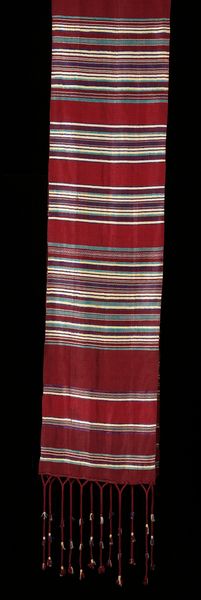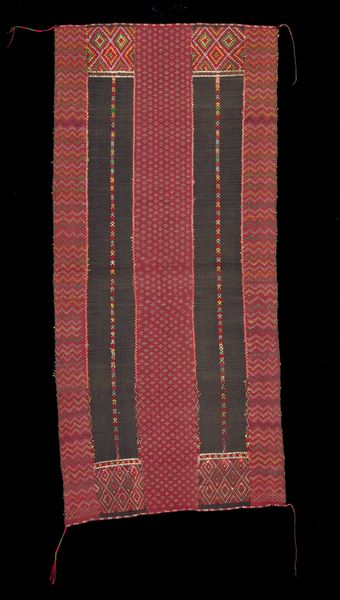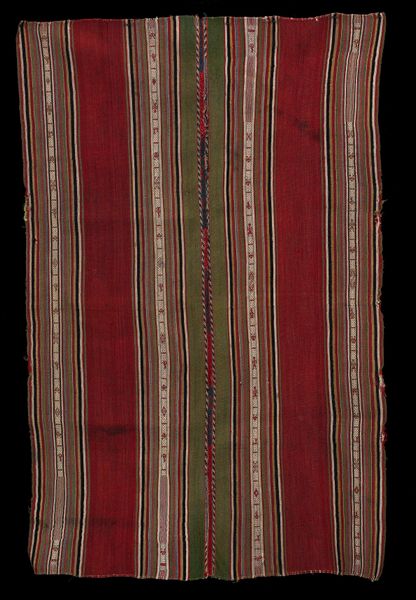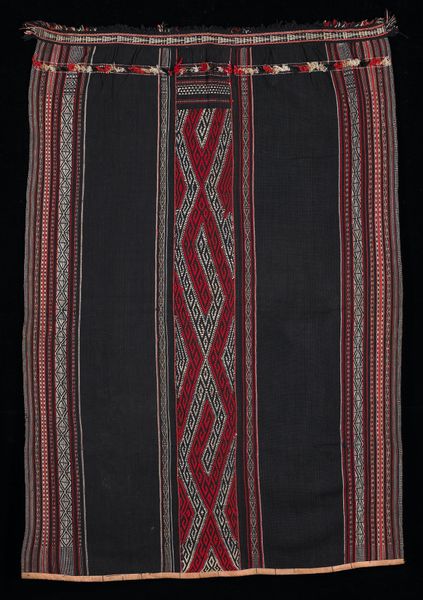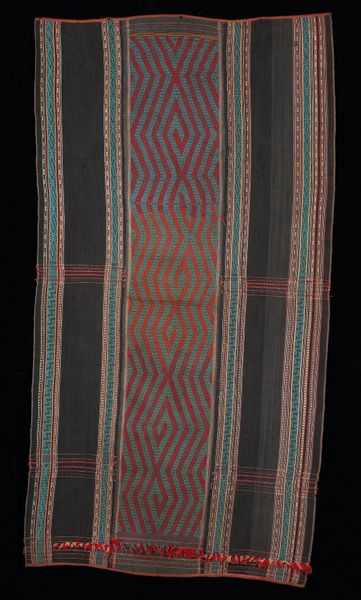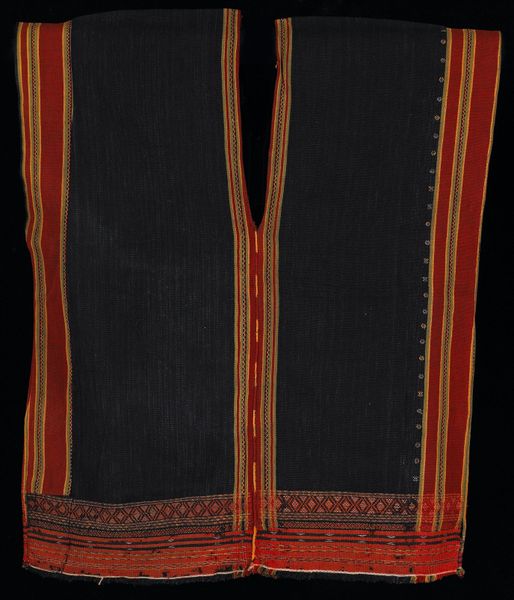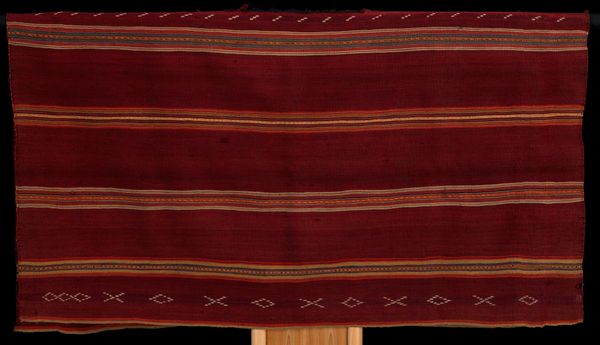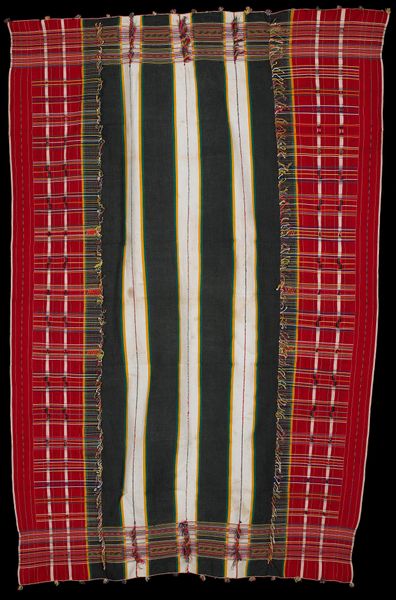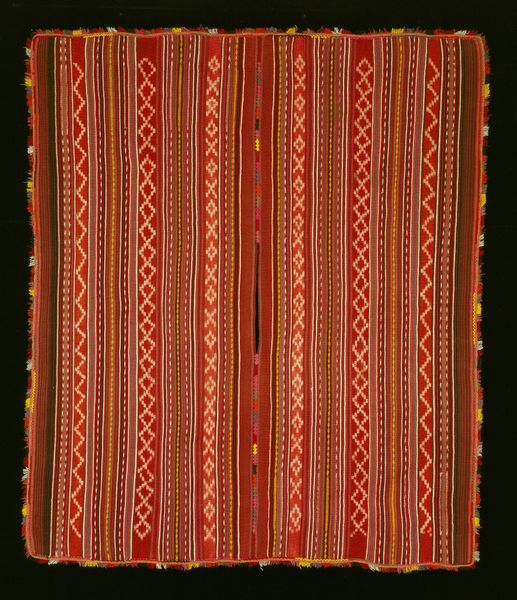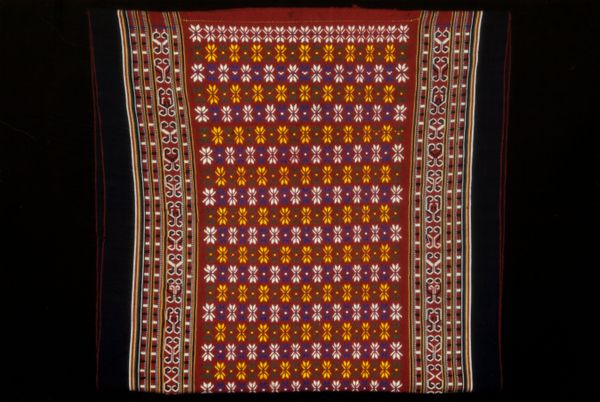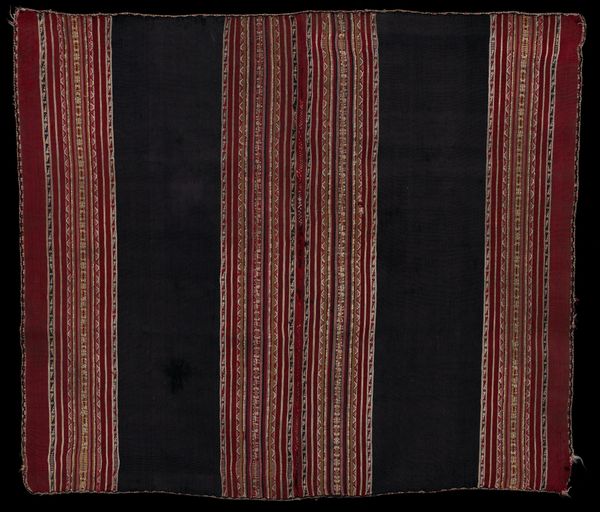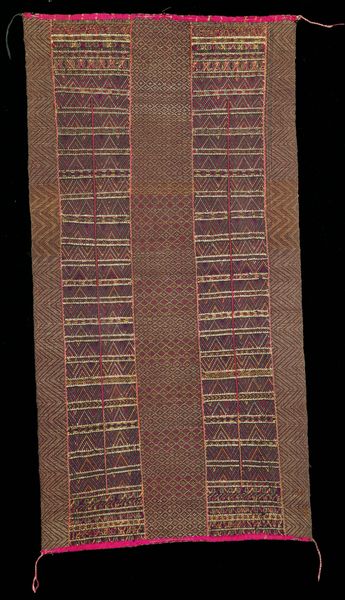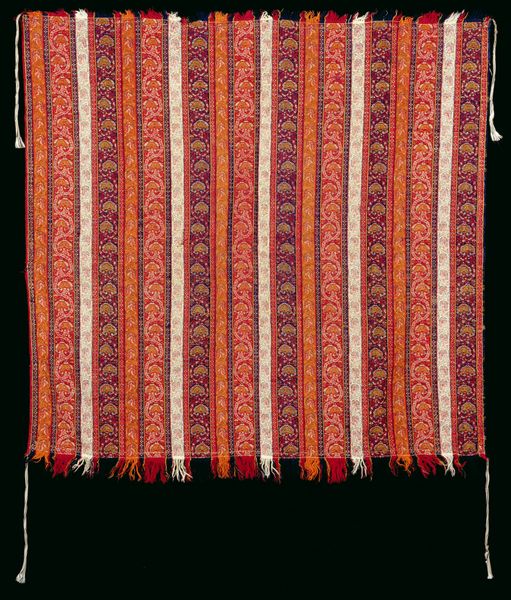
fibre-art, weaving, textile, cotton
#
fibre-art
#
weaving
#
textile
#
geometric pattern
#
geometric
#
cotton
Copyright: Public Domain
Editor: So, this textile, titled "Skirt," from sometime between 1950 and 1960, has a mesmerizing quality. I’m intrigued by the deep red color and intricate geometric patterns. How would you approach an interpretation of this piece? Curator: Let’s consider the labor embedded within this object. Think of the hours dedicated to weaving, dyeing, and stitching. The anonymous creator, likely within an indigenous community, engaged in a deeply material process. The geometric patterns aren't just decorative; they are the results of specific techniques of weaving. How might the social context have influenced these techniques, materials, and designs? Editor: I see what you mean. The process really dictated the aesthetics. And thinking about its purpose as clothing shifts how I perceive it; it wasn't necessarily intended to be ‘art’ in the formal sense, right? Curator: Precisely. Its value exists within a lived experience, beyond Western notions of art for art’s sake. The availability of materials – the fibers, dyes – and the techniques passed down through generations, shaped its creation and, subsequently, its meaning. The materiality speaks volumes about its cultural origins. Where might those materials have been sourced? Editor: That makes me wonder about trade routes and resource accessibility for this community during that period. It’s not just about the finished product, but about the journey of the materials and the people involved. I guess you can apply that principle of materiality to almost anything. Curator: Indeed! And, with “Skirt”, you also recognize how the act of making connects us to cultural heritage, labor, and the circulation of resources. Do we need to rethink art history in terms of craft processes to challenge these boundaries? Editor: I see artmaking in an entirely new way now; thinking about not only materials and also their relation to labor, commerce and cultural traditions offers new ways to create dialogues around the artwork. Thanks so much!
Comments
No comments
Be the first to comment and join the conversation on the ultimate creative platform.
